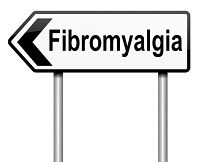Article
Study Bolsters Link Between Psoriatic Arthritis and Fibromyalgia
Author(s):
A single-center cross-sectional study has found elevated rates of fibromyalgia in patients with various forms of arthritis, including psoriatic arthritis. It joins previous studies that observed that the two painful conditions sometimes coincide.

A single-center cross-sectional study has found elevated rates of fibromyalgia in patients with rheumatic diseases such as psoriatic arthritis.
Among the 691 patients seen between September 2014 and April 2015, 325 had rheumatoid arthritis, 137 had radiographic axial spondyloarthritis, 64 had non-radiographic axial spondyloarthritis, 59 had psoriatic arthritis, 38 had peripheral spondyloarthritis, 28 had systemic lupus erythematosus, 27 had Sjögren's syndrome, 14 had scleroderma and 6 had myositis.
The cohort included 451 women (65.3%) and 240 men (34.7%). The mean age for all patients was 55.8 years ± a standard deviation of 15.5 years, and median disease duration was 11 years.
Investigators checked all patients for fibromyalgia and compared the number of cases found by a physician who specializes in fibromyalgia care and by the American College of Rheumatology’s 1990 guidelines for fibromyalgia diagnosis (ACR-90).
For the cohort as a whole, 97 patients (14%) were diagnosed with fibromyalgia by the expert doctor, but only 55 patients (8%) were diagnosed by the ACR-90 formula.
The prevalence of fibromyalgia meeting ACR—90 criteria was 4.9% among rheumatoid arthritis patients, 11.1% among spondyloarthritis patients (a 298-person group that included patients with psoriatic arthritis and all 3 varieties of spondyloarthritis), and 11.3% among patients with connective tissue disease (a 75-person group that included all patients with systemic lupus erythematosus, Sjögren's syndrome, scleroderma and myositis)
When judged by ACR-90 criteria, the prevalence of fibromyalgia was significantly higher in the spondyloarthritis group than in the rheumatoid arthritis group (p=0.05).
The expert physician diagnosed fibromyalgia in 7.7% of patients with rheumatoid arthritis, 17.5% of patients with spondyloarthritis and 28.2% of patients with connective tissue disease. Those figures indicated significantly more fibromyalgia in spondyloarthritis (p=0.003) and connective tissue disease (p=0.001) than in rheumatoid arthritis.
“Concomitant fibromyalgia is prevalent in inflammatory rheumatic disease, especially in spondyloarthritis and connective tissue disease,” the study authors wrote in the Annals of the Rheumatic Diseases. “An expert doctor makes the diagnosis of fibromyalgia more often than ACR—90 criteria.”
The new study is not the first to find elevated rates of fibromyalgia in patients with psoriatic arthritis.
A 2013 paper published in Arthritis compared fibromyalgia rates in 34 psoriatic arthritis patients and 44 healthy controls. (The median age of psoriatic arthritis patients was 52 years, while the median age of controls was 50.5 years. Some 53.33% of the psoriatic arthritis patients were women compared with 59% of controls.)
Using the London Fibromyalgia Epidemiologic Study Screening Questionnaire to diagnosis fibromyalgia in both populations, investigators identified the condition in 53.33% of psoriatic arthritis patients and 4.54% of the controls (p < 0.001). Using the Symptoms Intensity scale (Sis) to diagnose the condition, they found fibromyalgia in 37.50% of psoriatic arthritis patients and 6.66% of controls (p < 0.001).
“The findings in this study and future potential studies surrounding this issue have important implications regarding patients with psoriatic arthritis,” the authors of the earlier study wrote. “Patients with psoriatic arthritis with high disease activity status and poor functionality may benefit from fibromyalgia screening.”
Related Coverage:
Fibromyalgia Worsens Psoriatic Arthritis Outcomes
Fibromyalgia, Spondyloarthritis Can Occur Together, Study Finds
Obesity May Exacerbate Psoriatic Arthritis Risks, Limit TNFI Effectiveness




